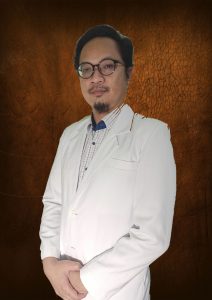2. The journal allows the author(s) to retain publishing rights without restrictions.
3. The legal formal aspect of journal publication accessibility refers to Creative Commons Attribution (CC BY).
The brachial plexopathy associated with massage therapy is rarely reported. This case report describes an uncommon case of brachial plexopathy that developed after a session of massage therapy and revealed past published reports of peripheral nerve injury following massage therapy. A 54-year-old Javanese woman developed sudden unilateral paralysis of her left shoulder girdle after a session of massage therapy. The massage session was stopped due to pain. She could not move her left shoulder immediately after 5 minutes of massage. There was hypoesthesia from shoulder to forearm, and there was decreased MMT of the left deltoid muscle. She regularly participated in a twice-weekly rehabilitation program targeting the left shoulder. It included NMES, laser therapy, PROM, strengthening exercises, and a home exercise program. A diagnosis of acute brachial plexopathy was suspected due to her recent history and the results of several examinations. She had a gradual recovery of strength, resolution of limitations of ROM, and sensory function in her shoulder. Rehabilitation programs have a major role in helping the patient do her functional activities. This case report presents as a reminder to massage therapists or physical therapists that massage therapy of the neck and shoulder should be carefully performed to avoid any injury. Further studies will help improve the safety procedures and effectiveness of massage therapy in the future.
Midha R. Epidemiology of brachial plexus injuries in a multitrauma population. Neurosurgery. 1997;40(6):1182–9.
Simmons Z. Electrodiagnosis of brachial plexopathies and proximal upper extremity neuropathies. Physical Medicine and Rehabilitation Clinics. 2013;24(1):13–32.
Seddon HJ. A classification of nerve injuries. Br Med J. 1942;2(4260):237.
Limthongthang R, Bachoura A, Songcharoen P, Osterman AL. Adult brachial plexus injury: evaluation and management. Orthopedic Clinics. 2013;44(4):591–603.
Walsworth MK, Mills III JT, Michener LA. Diagnosing suprascapular neuropathy in patients with shoulder dysfunction: a report of 5 cases. Phys Ther. 2004;84(4):359–72.
Chaudhry V, Cornblath DR. Wallerian degeneration in human nerves: serial electrophysiological studies. Muscle & Nerve: Official Journal of the American Association of Electrodiagnostic Medicine. 1992;15(6):687–93.
Cuccurullo SJ. Physical medicine and rehabilitation board review. Springer Publishing Company; 2019.
Herskovitz S, Strauch B, Gordon MJ. Shiatsu massage-induced injury of the median recurrent motor branch. Muscle Nerve. 1992;15(10):1215.
Giese S, Hentz VR. Posterior interosseous syndrome resulting from deep tissue massage. Plast Reconstr Surg. 1998;102(5):1778–9.
Jiang GL, Zhang LY, Shen LY, Xu JG, Gu YD. Fibrillation potential amplitude to quantitatively assess denervation muscle atrophy. Neuromuscular disorders. 2000;10(2):85–91.
Aksoy IA, Schrader SL, Ali MS, Borovansky JA, Ross MA. Spinal accessory neuropathy associated with deep tissue massage: a case report. Arch Phys Med Rehabil. 2009;90(11):1969–72.
Wu YY, Hsu WC, Wang HC. Posterior interosseous nerve palsy as a complication of friction massage in tennis elbow. Am J Phys Med Rehabil. 2010;89(8):668–71.
Mikhail A, Reidy JF, Taylor PR, Scoble JE. Renal artery embolization after back massage in a patient with aortic occlusion. Nephrology Dialysis Transplantation. 1997;12(4):797–8.
Kerr HD. Ureteral stent displacement associated with deep massage. WMJ. 1997;96(12):57–8.
Trotter JF. Hepatic hematoma after deep tissue massage. New England Journal of Medicine. 1999;341(26):2019–20.
Tsuboi K, Tsuboi K. Retinal and cerebral artery embolism after "shiatsu” on the neck. Stroke. 2001;32(10):2441.
Lee TH, Chiu JW, Chan RC. Cervical cord injury after massage. Am J Phys Med Rehabil. 2011;90(10):856–9.
Ernst E. The safety of massage therapy. Rheumatology. 2003;42(9):1101–6.
Posadzki P, Ernst E. The safety of massage therapy: an update of a systematic review. Focus on Alternative and Complementary Therapies. 2013;18(1):27–32.
Ross D, Maerz T, Lynch J, Norris S, Baker K, Anderson K. Rehabilitation following arthroscopic rotator cuff repair: a review of current literature. JAAOS-Journal of the American Academy of Orthopaedic Surgeons. 2014;22(1):1–9.
Robinson LR. Traumatic injury to peripheral nerves. Suppl Clin Neurophysiol. 2004;57:173–86.
Ferrante MA. Brachial plexopathies: classification, causes, and consequences. Muscle & Nerve: Official Journal of the American Association of Electrodiagnostic Medicine. 2004;30(5):547–68.
Smania N, Berto G, La Marchina E, Melotti C, Midiri A, Roncari L, et al. Rehabilitation of brachial plexus injuries in adults and children. Eur J Phys Rehabil Med. 2012;48(3):483–506.
Tung THH, Mackinnon SE. Brachial plexus injuries. Clin Plast Surg. 2003;30(2):269–87.
Tsao JCI. Effectiveness of massage therapy for chronic, non-malignant pain: a review. Evidence-based complementary and alternative medicine. 2007;4:165–79.
Field T, Diego M, Cullen C, Hernandez-Reif M, Sunshine W, Douglas S. Fibromyalgia pain and substance P decrease and sleep improves after massage therapy. JCR: Journal of Clinical Rheumatology. 2002;8(2):72–6.
Copyright (c) 2025 Yudiansyah Anggi Gilang, Syeda Tazkia Noor, Dwi Indriani Lestari, Gutama Arya Pringga

This work is licensed under a Creative Commons Attribution 4.0 International License.
1. The journal allows the author to hold the copyright of the article without restrictions.
2. The journal allows the author(s) to retain publishing rights without restrictions.
3. The legal formal aspect of journal publication accessibility refers to Creative Commons Attribution (CC BY).




